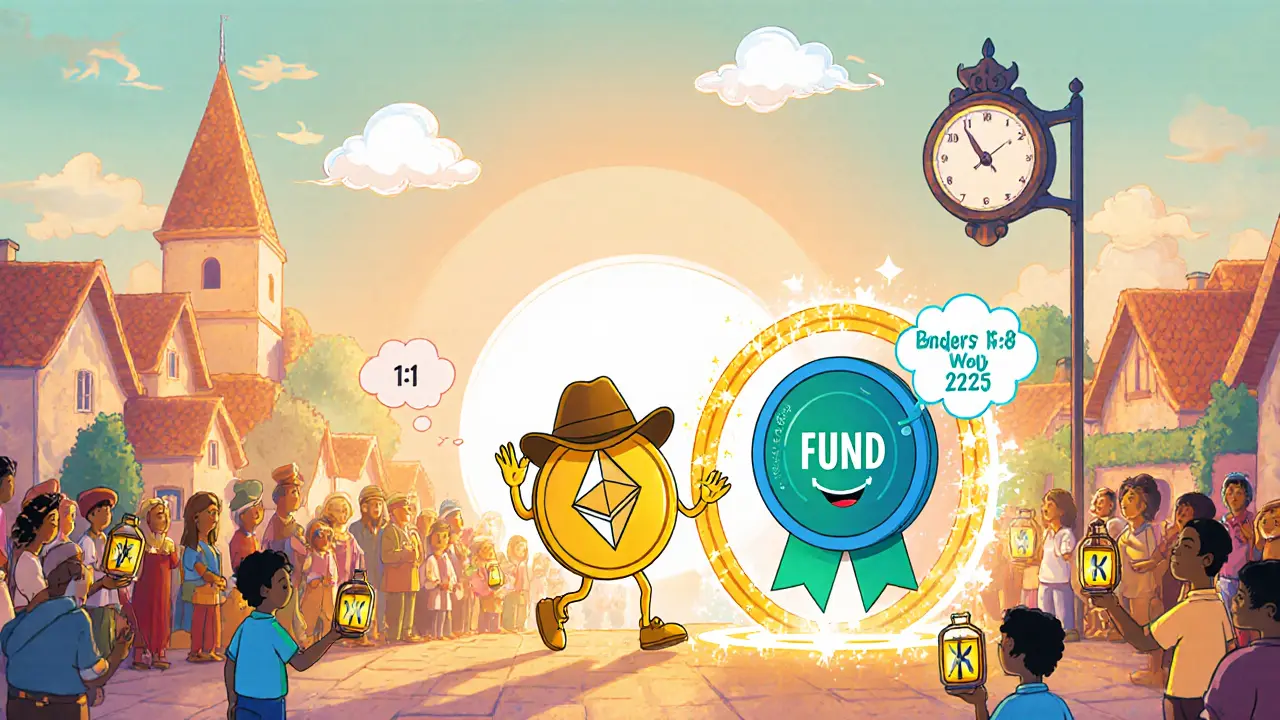FUND swap: How to Move Crypto Fund Tokens Efficiently
When working with FUND swap, the act of exchanging pooled crypto assets or fund tokens directly on a blockchain platform. Also known as token fund exchange, it lets investors shift exposure without cashing out. A decentralized exchange, a peer‑to‑peer market that runs on smart contracts provides the venue, while a liquidity pool, a reserve of assets contributed by users to enable instant trades supplies the cash needed for the swap. Underneath it all, smart contracts, self‑executing code that enforces trade rules guarantee that the transaction is trustless and transparent.
Why does a FUND swap matter? First, it cuts out the middle‑man. Traditional fund rebalancing often requires a broker, paperwork, and settlement delays. On a DEX, the same move happens in seconds, and the code enforces price and slippage limits automatically. Second, it opens up new strategies. You can hop between index‑style tokens, yield‑optimizing vaults, or sector ETFs without ever leaving the blockchain. Finally, it lowers fees. Since the trade runs on a liquidity pool rather than an order book, you avoid high spreads that come with low‑volume assets.
Key components of a FUND swap
Liquidity pool depth matters more than you might think. A shallow pool means a small trade can move the price sharply, causing unwanted slippage. Look for pools that have at least a few hundred thousand dollars in combined assets, or that are backed by reputable providers. The pool’s composition also matters; a pool that mixes stablecoins with the fund token can stabilize price during volatile periods.
The swap fee structure varies by platform. Some DEXs charge a flat 0.30% on every trade, while others use dynamic fees that rise during high congestion. Understanding the fee helps you decide whether a FUND swap is cheaper than a traditional broker route. Many DEXs also reward liquidity providers with a share of the fees, so you could earn a bit back if you contribute to the pool before swapping.
Security is non‑negotiable. Because FUND swaps rely on smart contracts, any bug can expose your assets. Stick to contracts that have been audited by reputable firms and have a track record of stable operation. Community reviews and on‑chain analytics tools can give you a quick health check before you hit the swap button.
Another practical tip: use a price oracle or on‑chain price feed to verify that the quoted rate matches the market. Some platforms integrate Chainlink or Band Protocol data, which reduces the risk of price manipulation. When you see a rate that looks too good to be true, double‑check the source.
Cross‑chain swaps are becoming more common. If your fund token lives on Ethereum but you prefer to trade on a Binance Smart Chain DEX, a bridge can move the asset across networks. Bridges add another layer of risk, so evaluate bridge fees, latency, and security audits before you commit.
Finally, think about the tax implications. Swapping one fund token for another is often treated as a taxable event in many jurisdictions. Keep a record of the transaction hash, date, amount, and price in fiat terms. Many crypto tax tools can import this data directly from the blockchain.
Putting it all together, a successful FUND swap blends the right platform, a deep liquidity pool, low fees, secure contracts, reliable price data, and an eye on tax. When you line up those pieces, you can move large positions quickly, test new strategies, or rebalance without the hassle of traditional finance.
Below you’ll find a curated collection of articles that dig deeper into each of these aspects—from Dubai’s crypto licensing rules affecting fund providers to how soft forks keep swaps seamless, and even guides on navigating token airdrops that could boost your portfolio. Whether you’re a seasoned fund manager or just curious about swapping pooled assets, these pieces will give you the practical insight you need to act with confidence.
Unification (FUND) Coin Explained: Basics, Swap, and Market Outlook
Posted By Tristan Valehart On 17 Oct 2025 Comments (16)

A clear guide to Unification (FUND) crypto coin, covering its token swap, architecture, market data, use cases, staking, risks, and how developers can get started.
READ MORE
